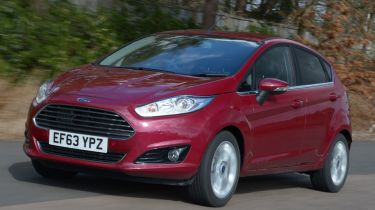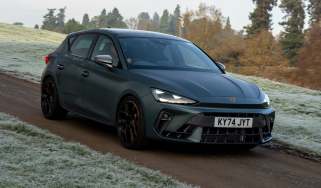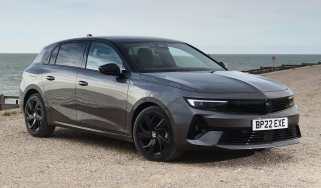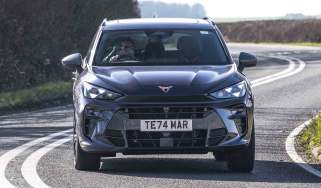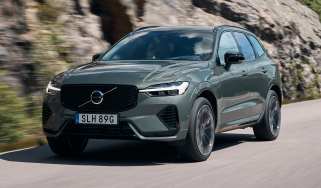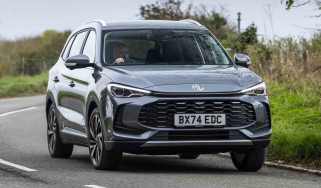Used Ford Fiesta (Mk6, 2008-2017) - What’s it like to drive?
Few small cars are as fun to drive as the Fiesta, while there’s everything from frugal diesels to the fire-breathing ST hot hatch
Ford has built a strong reputation for building cars that are great to drive – and the Fiesta is no exception. Agile and engaging handling us matched to a supple ride that gives the car a really grown-up feel. There’s also a wide array of engines to choose from, meaning you should find something to suit your needs.
Engines and performance
Our favourite Fiesta engine is the 1.0-litre turbo EcoBoost with 98bhp, which not only has more than enough low-end grunt for the supermini, it’s also keen to rev and sounds characterful with it. In the real world, this means confidence-inspiring overtaking pace that allows you to power up motorway inclines even in top gear – hills that would leave some small cars struggling.
A low-power 1.0-litre 3-cylinder engine was also available, without the turbo of the EcoBoost models and producing 79bhp. It's a smooth, characterful and thrummy unit, but you have to work it hard to make progress.
If you’re looking for a little more power there’s a 123bhp version of the turbo EcoBoost, which really does feel like a bigger engine than the three-cylinder 1.0-litre it is.
The 98bhp engine does 0-62mph in 11.2 seconds, and the 123bhp version in 9.4 – not quite in the hot hatchback league, but good enough for safe overtaking. Both versions are smooth and quiet, too.
Used - available now

2023 Honda
CR-V
40,439 milesAutomaticPetrol2.0L
Cash £23,795
2023 Honda
CR-V
28,316 milesAutomaticPetrol2.0L
Cash £20,995
2023 Mazda
CX-5
37,361 milesAutomaticDiesel2.2L
Cash £22,799
2023 Volkswagen
T-Cross
31,851 milesManualPetrol1.0L
Cash £14,249The other 1.0-litre EcoBoost engine takes power up to 138bhp, naturally offering an even quicker 0-62mph time – 9 seconds flat – while retaining good economy and refinement. It’s only available in ST-Line trim so buyers of this engine must also deal with firmer suspension and a sporty-looking body kit.
Those wanting to stick with the 1.0 but add even more power should look for a car tweaked by specialist tuner Mountune, that had an upgrade that tweaked the car's ECU to deliver up to 163bhp, although these models are very rare.
Amazingly, Ford still offered its long-serving 1.25-litre four-cylinder petrol alongside its newer three-cylinder units. Available with either 59bhp or 81bhp, this powerplant is still eager and smooth enough, but it can't match its modern counterparts for efficiency. It was the most popular engine before the 2013 facelift and in isolation is a capable performer.
Next there’s the 180bhp 1.6-litre four-cylinder EcoBoost engine of the high-performance Fiesta ST. Throaty sounding and packing a serious punch, this engine pushes the Fiesta ST to 62mph in less than seven seconds. Again, Mountune offered performance tweaks that boosted power to 197bhp and lowered the 0-62mph time to 6.7 seconds.
At the top of the range is the limited-run (just 400 examples were made available to UK buyers) ST200. Based on the standard ST, it gets 197bhp an 290Nm of torque, while an overboost function swells these figures to 212bhp and 320Nm respectively for 20-second full-throttle bursts. in combination with a subtly revised final drive ratio for the gearbox it results in a 0-62mph time of 6.7 seconds and a 142mph top speed.
Before the ST arrived in 2012, the Fiesta was briefly available in 118bhp 1.6-litre S1600 trim. The naturally aspirated unit was smooth, but it wasn’t much faster than the 1.25-litre petrol and so it proved unpopular with buyers, making it a rare find today.
Ford offered two TDCi diesel units when the Fiesta was launched in 2008, a 69bhp 1.4-litre and a larger 1.6-litre. The former was a sluggish performer with a leisurely 0-62mph time of 14.3 seconds. The 1.6-litre is much stronger, with muscular mid-range torque and capable of the 0-62mph sprint is a respectable 11.9 seconds.
A 1.5-litre TDCi, replaced both these units soon after the 2013 facelift and was available in two power outputs. We’d recommend the most powerful 93bhp version. It can do 0-62mph in a reasonable 10.9 seconds, compared with the 72bhp version's 13.5 seconds.
As with most small cars, the difference in refinement between diesel and petrol is marked, with the all versions of the TDCi more obviously chugging away under the bonnet of the Fiesta, especially after cold starts.
On the road
The Fiesta Mk7 has a reputation for delivering fun handling and an entertaining drive, and it can still show its most recent competitors a thing or two about driver involvement. Even now, the Ford’s sparkling handling is more entertaining than many brand new rivals.
The steering is light and direct, making the car nimble and fun to drive, while easy-to-use controls and good visibility make the Fiesta a confidence-inspiring partner around town. On the motorway, a smooth ride and a quiet interior give it a ‘grown up’ feel.
Despite coming with electronic stability control and traction control as standard, the Fiesta has a ‘natural’ feel to the driving experience that even some sports cars can’t match. The brakes are excellent too, easy to operate smoothly while powerful, too. That’s especially the case with the beefed up brakes fitted to the most powerful ST model.
The Fiesta is a great all-rounder then, though the Volkswagen Polo is the class leader in terms of outright refinement, especially at higher speeds.
As well as the standard five-speed manual gearbox, which has a slick shifting action, Ford also offers the Fiesta with a dual-clutch automatic gearbox. It’s called Powershift and available on Zetec, Titanium and Titanium X models, powered by the 1.0-litre EcoBoost engine or the wheezy and outdated 1.6-litre petrol.
Powershift is quick to change gears and almost as smooth as a traditional torque convertor automatic, but it’s a shame that it’s still not as refined as the standard-setting Volkswagen dual-clutch DSG unit. What’s more, manual shifts are only available via a tiny and counterintuitive rocker switch mounted on the lever, rather than more handy steering wheel-mounted paddleshifters.
